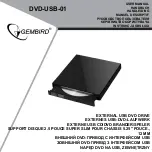
130
Operating Instructions ACU
12/16
11.5
Sensor evaluation
In the field of drive engineering, TTL and HTL sensors with 512, 1024 or 2048 division marks are
widely used. However, other division mark values are used, too. These division marks (often also
referred to as „increments“) determine the resolution (accuracy) at which a plant can be operated. A
“division mark" is defined as a pulse including the pause following the pulse – the pulse-duty factor
is typically 1:1, i.e. with each revolution, a track delivers the number of increments for evaluation.
Depending on the characteristics of the sensor and the requirements in the plant, different degrees
of sensor evaluation are possible. Typical evaluation accuracy levels include:
Single evaluation: One edge of a pulse of a track is counted and evaluated.
Double evaluation: Two edges (the positive and the negative edge) of a pulse of a track are counted
and evaluated.
Quadruple evaluation: A second (offset) track delivers additional edges which can be evaluated. Any
status change of the two tracks is registered and evaluated. Thanks to the offset arrangement of the
tracks, the direction of rotation can be detected additionally. The two tracks are commonly referred
to as A and B. Depending on when the edges occur, it can be determined if the motor rotates in
clockwise or in anticlockwise direction.
With double or quadruple evaluation, internal calculation for motor control is improved. The number
of division marks does not change.
In addition to tracks A and B, sensors often feature a reference track (also referred to as Z track,
zero track, C track). The reference track delivers one pulse per revolution. This track is used for
plausibility checking or for additional functions.
If an operation mode with reference track is selected for the speed sensor, the
frequency inverter will make sure that the Z track occurs according to the
parameterized
Division Marks Speed Sensor 1
491
. If the evaluation is not
consistent, a reaction as per parameter
Operation Mode
760
is triggered.
Example (quadruple evaluation):
Each edge 1, 2, 3 and 4 is an evaluated signal within the pulse-
pause cycle of Track A. After that, the cycle is restarted. The
type of edges indicates the direction of rotation:
Clockwise direction of rotation: A rising edge of A (1) is
followed by a rising edge of B (2).
Anticlockwise direction of rotation A rising edge of A (1)
is followed by a falling edge of B (2).
Track Z: One pulse per revolution
HTL encoders can be connected to the basic device. For connection of TTL encoders,
you will need a type EM-ENC encoder module. For connection of SinCos encoders or
absolute encoders, you will need a type EM-ABS encoder module.
B
t
A
Z
t
t
1
2
3
4
1
4
B
t
A
Z
t
t
1
2
3
4
1
4
Содержание active cube 201
Страница 1: ...ACTIVE CUBE Operating Instructions Frequency inverter 230 V 400 V 0 25 kW 132 kW...
Страница 2: ......
Страница 45: ...12 16 Operating Instructions ACU 45...
Страница 181: ...12 16 Operating Instructions ACU 181...
Страница 284: ......
















































